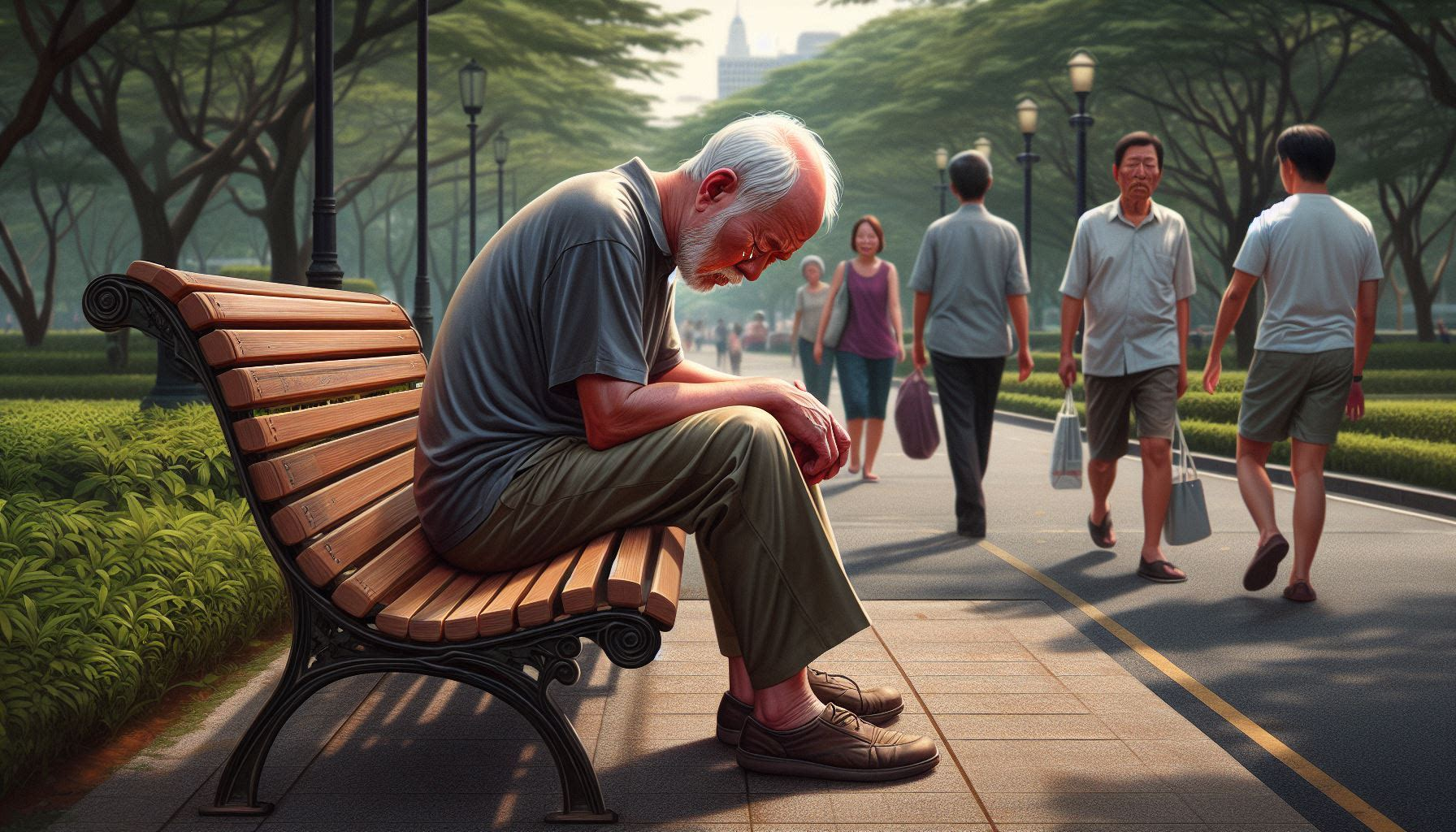Imagine a juggler with one too many balls in the air, each labeled with the weighty concerns of modern life. That’s us, trying to keep everything aloft in a world that seems to add another ball every few seconds. The forest fires, the pandemic, and the ceaseless march of distressing news can leave us feeling like we’re perpetually on the brink of dropping everything.
It’s no wonder feelings of overwhelm and hopelessness have found fertile ground in our collective psyche.
In this high-wire act of life, it’s crucial to remember that the safety net below is woven from strands of self-support. The importance of finding ways to bolster our spirits and soothe our minds cannot be overstated, especially when the days seem darkest. This article isn’t just a beacon in the fog; it’s a toolbox for building resilience.
We’re here to equip you with practical and effective strategies for coping with difficult emotions, ensuring that you can find hope and keep those balls in the air, even on the windiest of days.
Understanding Hopelessness and Frustration
Imagine trying to push a boulder up a hill, only to watch it roll back down each time. That’s a bit what hopelessness feels like—a sense of futility and despair, where the light at the end of the tunnel seems to flicker and die. It’s not just about feeling down; it’s a deeper, more pervasive sense that things won’t get better.
Hopelessness can strangle the joy out of life, leaving you feeling emotionally adrift. Frustration, its close cousin, is the emotional gridlock you hit when obstacles thwart your plans, leaving you feeling powerless and agitated.
These emotional heavyweights can do more than just spoil your mood; they can chip away at your mental health. When hopelessness and frustration become frequent visitors, they can usher in a storm of mental health challenges, including depression and anxiety.
Acknowledging these feelings isn’t a sign of weakness; rather, it’s the first step towards regaining your footing. It’s like admitting the boulder is heavy—it doesn’t make it any lighter, but it does open the door to finding help to push it up that hill.
Seeking Support from Loved Ones
Imagine navigating a stormy sea of emotions alone; it’s daunting, right? That’s where having a support system becomes your life raft. During those times when frustration and hopelessness loom large, don’t underestimate the power of reaching out to family and friends. They’re like the stars guiding sailors to safe harbor, offering not just a listening ear but also a hand to pull you back onto your feet.
Don’t shy away from meaningful relationships; they’re the secret spices that add flavor to life’s blandest moments. Here’s how you can stir up support:
- Channel your inner social butterfly and connect with loved ones.
- Embrace the art of conversation – a simple “How are you?” can work wonders.
- Be receptive to both giving and receiving advice; it’s a two-way street.
Remember, in the tapestry of life, your loved ones’ threads intertwine closely with yours, creating a stronger, more resilient fabric that can withstand the weight of despair. So, when you’re feeling adrift, reach for these bonds—they might just be your anchor in the storm. For inspiration on building these connections, Highland Springs and University at Buffalo’s School of Social Work offer excellent insights.
Practicing Self-Care Activities
Imagine self-care as your personal health and wellness toolkit, tucked away in your metaphorical medicine cabinet. It’s packed with tools designed to keep your emotional well-being in tip-top shape. Just as we brush our teeth to prevent cavities, engaging in self-care activities can help us manage stress and fend off the emotional equivalents of tooth decay, such as anxiety and depression.
By attending to our needs through self-care, we’re better equipped to navigate life’s storms with resilience and grace.
Here’s a treasure chest of self-care strategies to explore:
- Set healthy boundaries – like a personal force field, they protect your time and energy.
- Practice gratitude – like seasoning for the soul, it can make even mundane days taste marvelous.
- Embark on a digital detox – sometimes, unplugging is the best way to recharge.
- Get moving – whether it’s a dance party for one or a brisk walk, let your body lead the way to better moods.
- Laugh out loud – it’s like internal jogging for your happiness muscles.
In the tapestry of life, each self-care thread strengthens the overall design. By weaving these activities into your daily routine, you’re not just surviving; you’re thriving with a vibrant splash of emotional resilience. Self-care isn’t selfish; it’s a necessary strategy for maintaining balance in a world that often feels like a tightrope walk over a canyon of chaos.
Reframing Negative Thoughts
Imagine your mind as a sculptor, tirelessly shaping the clay of your experience. The thoughts that whirl through your head don’t just vanish like smoke; they etch patterns into your emotions, influencing your every action. But what happens when this inner artist gets stuck in a rut, chiseling out a series of gloomy figures? That’s where reframing negative thoughts comes into play.
It’s akin to teaching your inner sculptor a new style, moving from dreary to hopeful. You start by spotting these pesky negative thoughts, like a wary cat eyeing a suspicious shadow. Once identified, you don’t just shoo them away; you hold them up to the light and challenge their truth. This is the essence of cognitive restructuring, a process where you replace the old, stress-inducing narratives with fresh, balanced perspectives.
For instance, if you’re feeling left out because friends didn’t invite you to dinner, rather than letting the thought “They don’t like me” take root, counter it with “I am valued, but it’s okay to not be included every time.” It’s about swapping a lens of distortion for one of clarity. With each reframed thought, the sculpture of your psyche becomes more robust and radiant, a true reflection of your best self.
Taking Action and Being Present
When life tosses us into a tempest of turmoil, it’s the grit to take action that helps us navigate through the storm. Instead of being a spectator to your own life’s drama, clutch the reins and steer.
Act on what you can control, and trust me, there’s always something within your grasp. It’s like playing chess with the universe; you may not control the board, but you sure can move the pieces. Taking charge of your job search or skill enhancement when the job market is capricious, or offering emotional support when a loved one is ill, are ways to light a candle instead of cursing the darkness.
Meanwhile, the art of mindfulness is like a serene lighthouse guiding us back to the present moment. Surrendering to the now conserves your energy for the battles you can actually win. By focusing on the sensory symphony around you — the breath you’re taking, the sights and sounds of life — you’re not just standing in the eye of the storm, you’re dancing in it.
So, when the emotional waves crash hard, remember that you’re the captain of your soul’s ship. Anchor yourself in the present with mindfulness, and when the time is right, hoist the sails of action. The combination of being present and proactive is your compass to calmer seas.
Also read: 4 Things to Remember When Life Feels Hopeless
Seeking Professional Help
When the fog of frustration and hopelessness blankets your mind, it’s time to consider that a professional lighthouse might just be what you need to guide you back to shore. Acknowledging that your sails need mending is the first step towards calmer waters. Seeking professional help is not a sign of weakness, but rather a brave act of self-care.
Whether it’s the compassionate ear of a therapist or the science-backed assistance of medication, there are various forms of support designed to lift the anchor of despair.
Yet, for many, the mere mention of therapy sessions or antidepressants is met with the stormy seas of stigma. But let’s clear the air: reaching out is akin to putting on a life vest when the waves get too high. It’s practical, necessary, and can very well save your life. So, if you’ve been treading water for more than a fortnight, it’s time to signal for help.
Embrace the journey towards a more hopeful horizon with resources like talk therapy or explore the best online therapy programs to find the right fit for you.
Coping with Specific Challenges
Life can sometimes feel like a juggler’s act, with one too many balls in the air—whether it’s the sting of loss, the battle against illness, or the uneasy dance of life changes. As we face these hurdles, it’s crucial to arm ourselves with a quiver of strategies to steady our aim and hit the bullseye of coping.
- Firstly, acknowledge your feelings. Emotions are like fingerprints; unique and personal. It’s okay to feel a cocktail of anger, grief, or anxiety. As Living Openhearted suggests, give yourself the grace to feel without judgment.
- Next, identify your resistance to change. Resistance can be a sneaky saboteur, lurking in the shadows of comfort zones. HelpGuide highlights the importance of understanding the emotional barricades that can block the path to adaptation.
- Finally, embrace adaptability. Like a tree bending in the wind, flexibility can mean the difference between breaking and thriving. Change is not the enemy; it’s the terrain of life. By accepting and adjusting, as recommended by SAMHSA, we can navigate the unpredictable waves of existence.
Remember, while life doesn’t always give us a roadmap, with the right mindset and tools, we can chart our own course through the thickest of fogs.
Finding Hope and Overcoming Hopelessness
Imagine standing in a downpour, umbrella in hand, believing the sun will peek through the clouds any moment—that’s the essence of hope, a beacon in the storm of life’s challenges. Hope plays a pivotal role in our ability to navigate through turbulent emotions, acting as the compass that guides us toward brighter days.
The journey to finding hope can be illuminated by the wisdom shared in “Finding Hope in Hopelessness”, a collaborative work by Anthony P. Acampora and Eric Oakes, that merges faith-based insights with clinical strategies.
Embracing self-compassion is like giving yourself a warm hug on a cold day—it’s acknowledging that it’s okay to be imperfect and to struggle. Identifying your inherent strengths can be a game-changer; it’s about recognizing the superhero within, cape or no cape.
Cary Solomon, a seasoned professional in Hollywood, endorses this approach, highlighting the book’s ability to shine light on the power of unity and common good, even in a “divided world.”
So, as you face the Goliaths of frustration and hopelessness, arm yourself with the slingshot of your inner strengths and the smooth stones of self-kindness. There’s a promising horizon ahead, and you’re capable of reaching it. Let this be your gentle nudge of encouragement to keep moving forward, because, truly, the future holds a tapestry of hope just waiting to be woven by your hands.
Conclusion
As we navigate the rollercoaster of life, it’s inevitable that we’ll face the steep drops of hopelessness and frustration. But like any seasoned thrill-seeker knows, the right strategies can transform a harrowing plummet into an exhilarating ride.
To combat the feeling of despair, reframe your mindset to envision alternative paths and new experiences that await you, like a gap year filled with growth and adventure. Embrace positive coping strategies such as journaling or drawing, which serve as creative outlets to express and process emotions.
And never underestimate the power of a solid support system; leaning on friends and family can be the lifeline you need when the waters get rough.
So, take a deep breath and implement these strategies. Reach out for support, because sometimes, sharing your burden can lighten it. Remember, within every challenge lies the seed of opportunity, and even in the thickest fog of uncertainty, the sun of hope is just waiting to break through.
Let’s find that hope together and remind ourselves that the journey isn’t just about the destination, but the lessons and strength we gather along the way.




